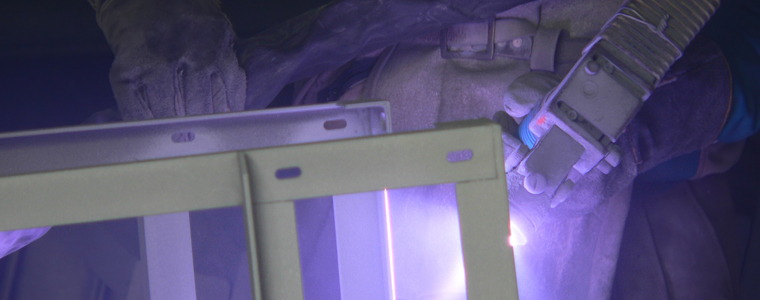Metallizing, sometimes referred to as thermal spray coating, is the process of applying a thin metallic coating to a substrate for the purpose of protecting it against corrosion and physical wear. Most commonly, aluminum, zinc and their alloys are used. These are heated either electronically or using a flame, and are then sprayed onto a substrate that has already undergone some method of surface preparation.

Metallizing is a viable method of corrosion protection for any metal or concrete surface that can be adequately blasted and cleaned before the application. Pure aluminum and zinc-aluminum alloy used via this method have been especially effective as marine coatings. Thermal spray coatings are often applied to bridges, locks and dams, piers, and other onshore and offshore facilities.
The benefits of metallizing
Since no solvents are involved in the metallizing process, no potentially harmful volatile organic compounds (VOCs) are emitted. As environmental regulations concerning the emission of VOCs are increasingly tightened, many owners and painters are exploring options for limiting their output. Metallizing is one method receiving more attention as a result. An added benefit of containing no solvents, metallizing projects also have virtually no cure time. Assets can be put back in service as soon as the process is complete. This is a massive draw when downtime equals lost revenue.
Metallizing can also occur regardless of ambient conditions. Unlike many paint-based coatings, these metals and alloys can be applied in any temperature or level of humidity. Whether in the middle of a Southwest summer or a Midwest winter, metallizing is only limited by concerns for the safety of the crews performing the work, from a weather standpoint. This lengthens the season for coating applications and increases the likelihood of getting a project done during the industry’s traditional “off season.”
Metallizing, though similar to hot-dip galvanization, has some distinct advantages over that practice. First and foremost, metallizing utilizes a spray application, making it a viable solution for large structures, even when deconstructing isn’t possible or cost-effective. And because the substrate remains cooler than with hot-dip galvanization, there is virtually no risk of damage or distortion of the substrate. There is also a wider variety of material that can be sprayed thermally, making it a possible solution in greater number of situations.
Talking to a professional
Metallizing as a method of corrosion protection shows great promise. It has been demonstrated to provide a durable, long-lasting solution for the protection of steel and concrete substrates. Advances in thermal spray equipment have dramatically increased spray rates since the technique became widely used, cutting the time needed to accomplish these projects significantly.
But despite all these benefits, metallizing may or may not be the right solution for your project. The process is often accompanied by higher upfront costs compared to other methods, and is simply not a viable solution under some circumstances. But if long-term durability is a must for your project, metallizing is an option that should certainly be discussed. Get in touch with Thomas Industrial Coatings today to talk about options, including metallizing, for your next project.


